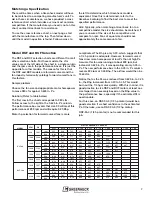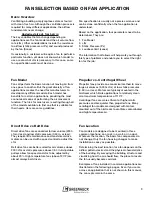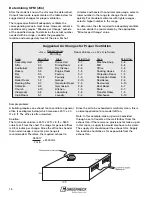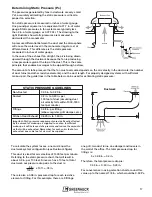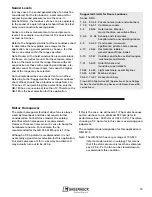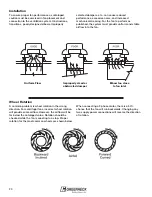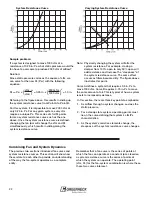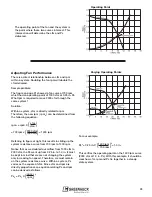
Motor Horsepower
The motor horsepower for direct drive fans is always
sized by Greenheck and does not require further
consideration. For belt drive models, the catalog
identifies which horsepower is recommended.
However, there are times when it is wise to bump the
horsepower one size. For example, the hp
recommended for the GB-180 at 810 rpm is 1/3 hp.
Although a 1/3 hp motor is recommended, it is not
necessarily a good motor selection for this application.
Our static pressure of 0.5 in. was only an estimate. It
may actually turn out to be .625 in.
If this is the case, we will need a 1/2 hp motor because
our fan will have to run at almost 900 rpm (refer to
performance box - 2624 cfm at 0.625 in.Ps). Therefore,
choosing a 1/2 hp motor in this case is exercising good
judgement.
The complete model designation for this application is
GB-180-5.
Note: The GB-180-5 has an rpm range of 700-940
(refer to model column in catalog). This means
that if the static pressure is less than estimated,
say 0.25 in. Ps, the fan can be slowed down to
accommodate this condition.
Sound Levels
In many cases, the sound generated by a fan must be
considered. For the fan industry, a common unit for
expressing sound pressure level is the sone. In
practical terms, the loudness of one sone is equivalent
to the sound of a quiet refrigerator heard from five feet
away in an acoustically average room.
Sones are a linear measurement of sound pressure
levels. For example, a sound level of 10 sones is twice
as loud as 5 sones.
Refer to the Suggested Limits for Room Loudness chart
to determine the acceptable sone range for the
application. As a general guideline, choose a fan that
has a sone value within the range specified.
Note: Rooms with a hard construction (concrete block,
tile floors, etc.) reflect sound. For these rooms, select
fans on the lower end of the range. Rooms with soft
construction or those with carpeting and drapes, etc.,
absorb sound. For these rooms, fans near the higher
end of the range may be selected.
Our example describes an exhaust fan for an office.
Referring to the “Suggested limits for Room Loudness”
chart, offices should have a loudness range from 4 to
12 sones. Of our remaining three selections, only the
GB-180 has a sone value of less than 12. Therefore, the
GB-180 is the best selection for this application.
Suggested Limits for Room Loudness
Sones DBA
1.3-4
32-48
Private homes (rural and suburban)
1.7-5
36-51
Conference rooms
2-6
38-54
Hotel rooms, libraries,
movie theatres, executive offices
2.5-8
41-58 Schools and classrooms,
hospital wards, and operating rooms
3-9 44-60
Court rooms, museums,
apartments, private homes urban)
4-12
48-64
Restaurants, lobbies,
general open offices, banks
5-15
51-67
Corridors and halls, cocktail lounges,
washrooms and toilets
7-21
56-72
Hotel kitchens and
laundries, supermarkets
12-36
64-80
Light machinery, assembly lines
15-50
67-84
Machine shops
25-60
74-87
Heavy machinery
From AMCA Publication 302 (Application of Sone Ratings
for Non Ducted Air Moving Devices with Room-Sone-dBA
correlations).
19



